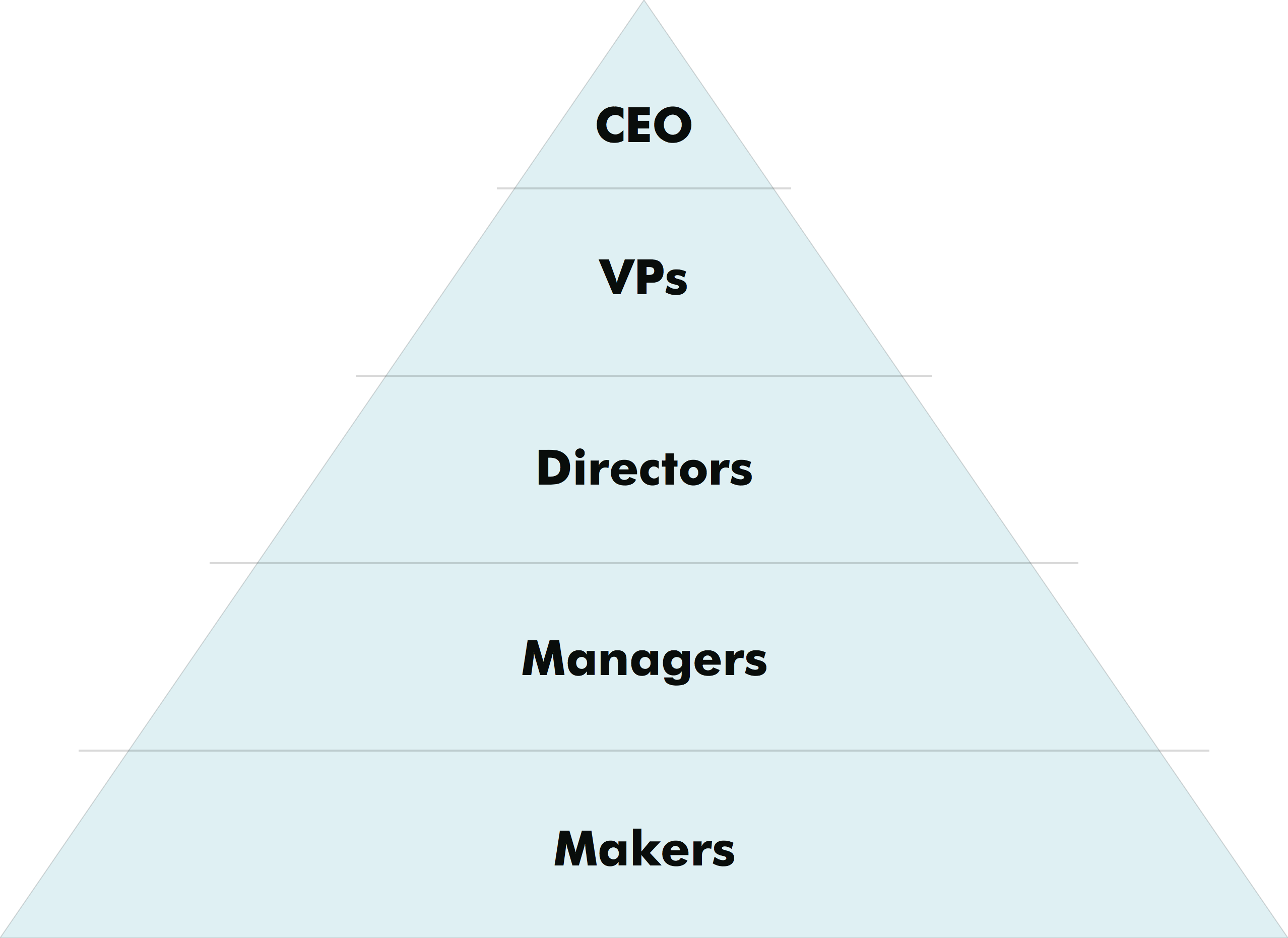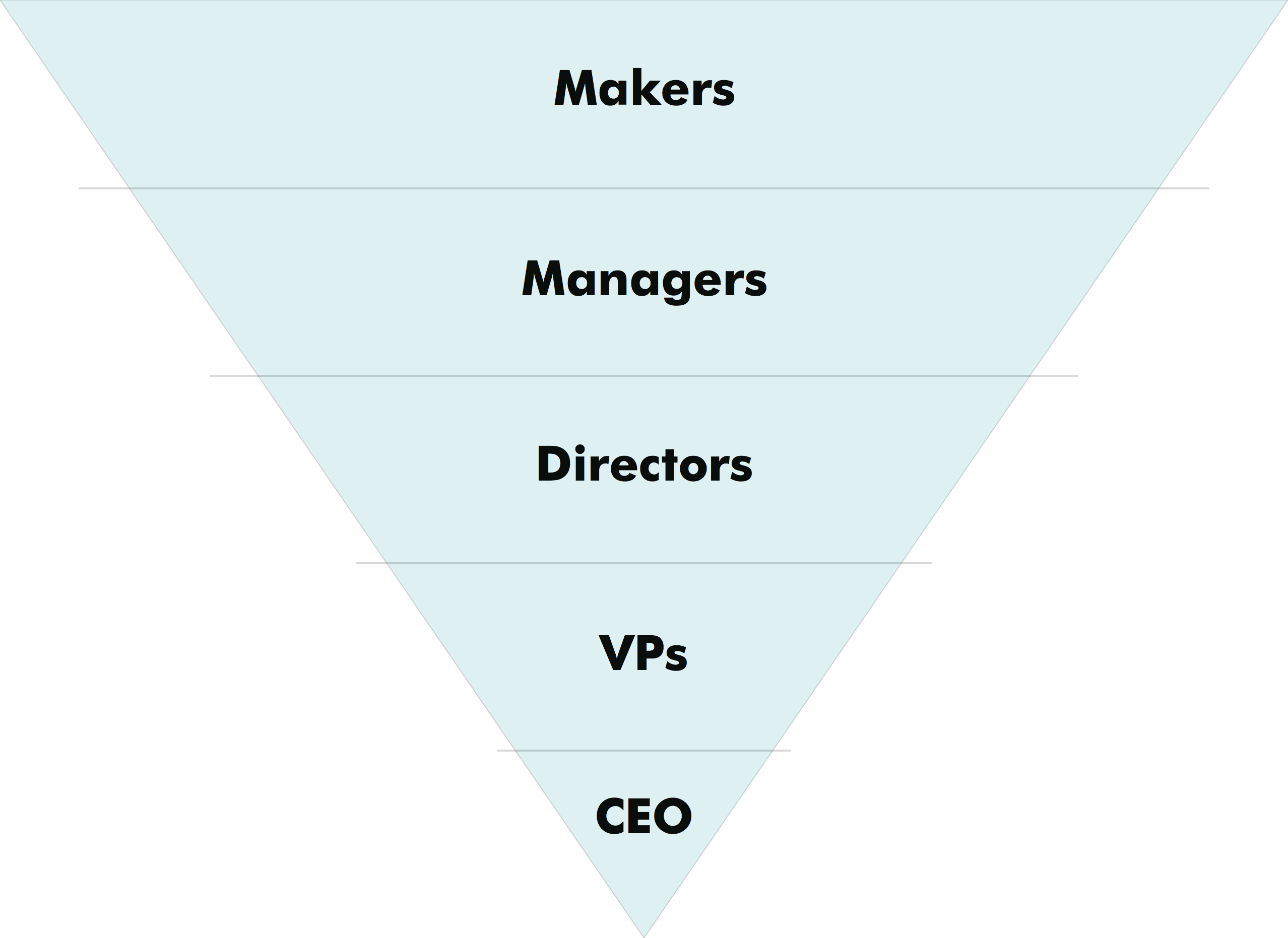Management & Power
When I worked at Etsy, our CEO, Chad Dickerson, gave a talk where he described how most companies think about management structures. To most people reading this, the following image will be a familiar concept:
Conceptually, the message for how decisions get made is pretty straightforward: The CEO tells the VPs what to do, the VPs tell the Directors what to do, the Directors tell the Managers and the Managers tell the Makers what to make. I've talked to a lot of first time managers who are attracted to the role because they see the above structure and consider management a way of gaining power over their particular area. When asked why they want to manage people, you'll hear things like, I want to make sure our code is good or I want to ensure that everyone is getting their work done on time. This sort of perception of the job isn't very surprising: when your job was making things it was probably important to you to ensure your own work was as timely and high-quality as possible. It must be pretty exciting to move into a role where you can make sure all the code, design or roadmaps are up to your personal standards, right?
The problem these new managers are going to face is that the artifact they're responsible for has changed. As a design manager, you are no longer directly responsible for the design that gets done—that's the responsibility of the designer. As an engineering manager, if you're tying your success to every line of code your team writes, you're going to have a bad time.
Your output is the success of the people you manage. After describing the typical visualization of management structure, Chad went on to talk about how he views management, which looked something like this:
Obviously the layers are exactly the same, but now with a completely different context. Conceived of this way, the power to determine what the company needs to do is centralized with the largest group of people, the people making things. A lot of companies talk about getting ideas from the "bottom up", but that still tells you exactly who they think is at the bottom. In the inverted pyramid above, management is treated as a support structure instead of a power structure. The CEO supports the VPs (and the entire company, really)—making sure they have clarity and are able to do their jobs well. The VPs support the Directors, the Directors support the Managers and the Managers, surprise, support the Makers.
The thing I love most about Chad's visualization is that it really gets to the heart of what management is. Management isn't about accruing power, it's not additive in that way. Management is about letting go of your old power (the power to write great code or design an awesome feature yourself) and putting that into the hands of your team. It's about enabling the people on your team and supporting them to do their very best work. And yeah, sometimes that will mean giving someone some feedback on their work or helping them think their way out of a jam, but those moments are in service of empowering them, not you. Your new power is hiring great people and removing roadblocks, not becoming one yourself.
At the end of the day, our organizational structures are important, but how we choose to view and interpret those structures is equally important. Is our perception of our organizational relationships in service of each other or ourselves? Are we setting ourselves up to empower as many people as possible or to consolidate decision-making? The answers will not only determine who you are as a manager, but their sum total will mold and shape the future of your entire team and organization.

